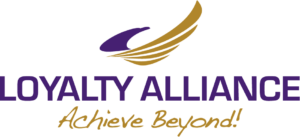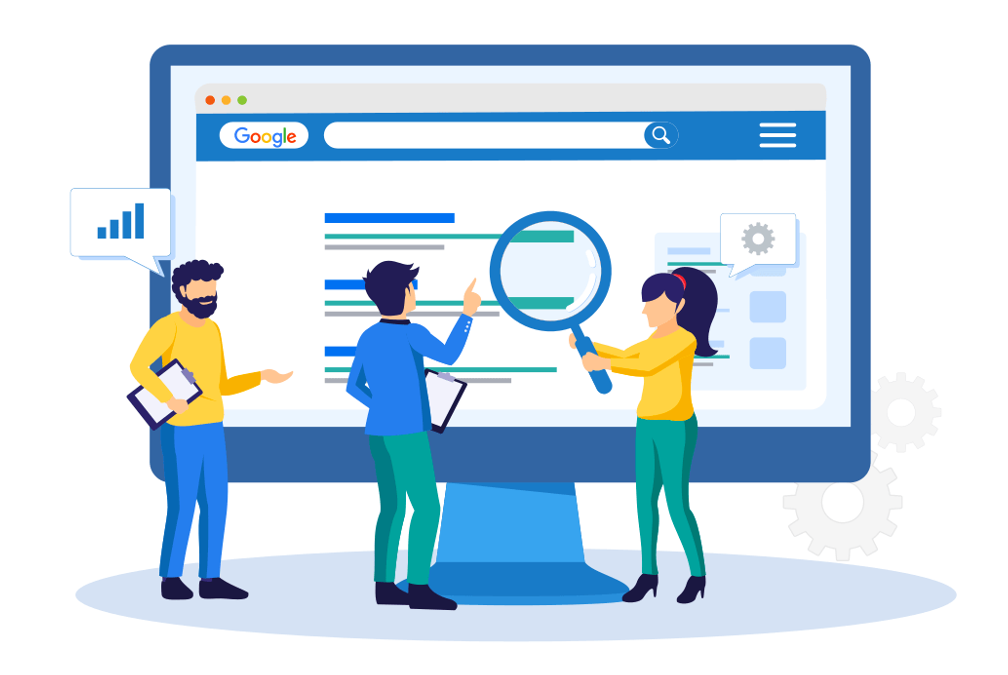All too often, I come across business owners that believe simply publishing a website gets the job done. This “build-it-and-they-will-come,” attitude just won’t cut it when over 250,000 new websites debut daily. On-page SEO is necessary if you want traffic coming to your website. It’s the only way search engines are aware of your site and the information it provides.
In fact, by the time you finish reading this article, over 2,000 new websites will be published. According to Netcraft’s July 2022 Web Survey there are well over 1 billion web sites (of which nearly 200 million are active).
I can’t even begin to count the number of times that I talk with business owners who invest thousands of dollars in creating a website and then wonder why they aren’t getting any business from it.
Their website is a needle in the haystack of websites, and the reason that they aren’t getting any business is because all the time and effort is put into into the front-end design, and more often than not, there’s been zero effort to add the necessary elements for Search Engines like Google, Bing and Yahoo, to find and categorize the site in the first place.
What is On-Page SEO?
Search Engine Optimization (SEO) has pretty much always been around and it is the means for organizations to drive traffic to their websites, attract new audiences, spread knowledge, and ultimately drive revenues.
One of the biggest mistakes a business or marketer can make today is ignoring SEO. The facts are fairly straightforward, and my guess is that if you just think about how you interact on the web, you’ll consider these statistics to be valid
- 93% of online experiences begin with a search engine.
- 89% of online purchasers used SERPs to make their decision. How often do you look at results beyond the first page of results?
These numbers paint the picture of the importance of SEO to a customer’s journey, whether it’s to a website, sales page or funnel. If you don’t take the time to optimize search, you’ll likely be losing significant potential traffic and sales.
By simply putting at least a little effort into SEO, you can get more visibility over less time while also reducing your overall marketing costs. To do otherwise is “penny-wise, pound foolish.” It is basically a win-win!
But as basic a concept as that appears, it can be extremely frustrating because there are so many little elements that it seems impossible to know exactly what to do, whether it be at a minimum, or maximally how to best game the system and trick the ever changing world of Google’s search algorithms to work to your advantage.
SEO comes in two flavors: Off-Page and On-Page. Off-Page SEO are those activities on other people’s sites that link back to your site, while On-Page SEO are elements on each page, image and video that resides on your website that a search engine can use to decide whether or not to rank your site over others when people are searching for information or solutions to their problems, questions or needs.
Understanding On-Page SEO
On-page SEO involves a variety of techniques you can employ on each page to help ensure it can rank on a Search Engine Results Page (SERP).
The more on-page SEO optimization you do, the more relevant traffic you’ll get to your website.
There are many technical aspects of a webpage that can be optimized with on-page SEO to increase your page ranking, and they include:
- Title tags
- Headings
- Meta descriptions
- URL structure
- Alt text for images
- Internal links
- Site speed
- Responsiveness
On-Page SEO Technical Best Practices
Knowing these technical aspects aren’t enough. You also need to at least be able to implement those best practices that are the easiest to incorporate and can deliver the best returns.
Adding keywords and hashtags are a fairly easy thing to do. At the very least, make some effort on finding those keywords that are getting the optimal amount of traffic.
Don’t confuse optimal with keywords having the most traction. If you use only those keywords that get the most traction, your small business will likely get lost in the crowd so it’s worth getting a basic understanding on how to use keyword search volume metrics to your advantage so that you won’t get lost in SERPs.
Use Title Tags
Title tags are HTML elements you can use to designate the name of a webpage and are displayed on SERPs as the clickable result title. Each title tag should be unique, descriptive about what the page is about, optimized with a keyword and under 60 characters in length.
Include Relevant And Optimized Headings
Headings are the titles you give to content. According to a recent case study on Moz, simply improving your site’s H1 tag can, on average, increase organic traffic by 9%.
Main headings are identified in HTML code with H1, and subheadings (H2 – H6), and are used by search engine algorithms to determine rankings for SERP. That’s why headings and subheads should focus on relevant and descriptive words, and can be optimized even further using keywords as long as they are different.
Think About Page URL Structure
Your URL structure is important when search engines determine how relevant a page is compared to a query, and it should be descriptive of the page’s subject. You can also optimize URLs with keywords.
For example, a URL such as http://www.megafluence.co/seo-tips is structured far better than http://www.megafluence.co/aug22/5/30/123456 (that puts the page in the folder for blog posts published on in the 5th week of August 2022 on the 30th).
Include Alt Text
Alt text (alternative text) serves two purposes. It can be used to describe images for those that have accessibility issues in reading web pages, but more importantly for your business, it gives search engines more information to use in ranking your page for SERP. Your alt-texts should be 125 characters or less, optimized with a keyword or phrase if appropriate and, of course, be specific and descriptive of the image itself.
Prioritize Page Load Speed
Were you aware that 47 percent of people expect a site to load within 2-seconds, and 40 percent will leave after 3-seconds so you can see why it’s important to ensure fast page load speed.
It’s also important to note that search engines penalize slow-loading pages with a lower ranking. If you’re not sure how your site ranks, test and benchmark your page speed.
Include Relevant Internal Links
Internal links not only make your site easier for visitors to navigate, it also makes it easier for search engines to index pages. At the very least, each page on your site should link back to its category or subcategory page and to the homepage.
Add Meta Descriptions
Meta descriptions summarize a page’s content and tell web users why they should read your content instead of somebody else’s. The meta description appears below the title and the URL, and it should be 160 characters or fewer.
Ensure A Responsive Design
Responsiveness is a design element that not only ensures your page displays properly, but also loads quickly.
Make sure that images and videos are optimized as much as possible. That means keeping the file sizes as small as possible because, as mentioned previously, load times are an important search engine ranking factor.
Be sure to check how each page renders on mobile devices, tablets and computers. This will continue to be an important factor as more people around the world use mobile devices as their sole connection to the internet as well as for online search.
Research And Include Keywords
In SEO, keywords are the glue that holds together your on-page strategy. They can be incorporated into all technical elements of a web page. Don’t just add keywords “willy-nilly.” Research keywords in order to select those that can easily be incorporated into your content and that will result in helping to drive traffic to your site..
The Impact of Content in SEO
When playing the SEO game, you need to put in the effort to give search engines the elements they use in their algorithm. It all starts with ranking content.
Content is King. That’s because it is content that ultimately brings traffic to your site. Sure, the technical aspects of SEO are important, but both on-page and off-page SEO is meaningless without content.
Because it is so crucial, not just any content will do. It doesn’t matter what type of content it is (whether it be blogs, videos, infographics, web copy, polls, quizzes, etc.) as long as that content is derived from an intent-driven content plan.
Your content must 1) address current problems your ideal customer needs to solve, 2) is relevant, interesting, engaging and has value, and 3) is easily shareable so that people will want to repost it.
Unless there’s a valid reason, such as a membership site or subscription paywall where you would NOT want content to be sharable, your goal should always be to reach as many eyes as possible. Make it easy, and if you’re lucky, your content may even go viral.
The key to creating a traffic-driving content plan is 1) understand what people are actively searching for (in your area of expertise, of course), and 2) be sure to include that keyword information in the title and lead paragraph in your descriptions. If it’s audio or video content, that same keyword information should also be in the first 3 seconds of your content.
If you want to attract viewers, you first need to create content that answers the questions they are actively seeking answers for, and then you need to do what’s necessary so that search engines can easily find your content.
It’s essential that your content be original (unless you explicitly state otherwise and provide attributions). If you’re unsure, use these ways and tools to check for duplicate content.
Conclusion
As web user and online consumer behavior constantly changes, so do search engine optimization best practices. No matter how it is evolving, the best approach to SEO is having a solid strategy.
On-page, the main concerns are quality content and making sure the technical aspects of the site have been optimized for speed, efficiency, and keywords. It’s probably a good idea to create a checklist or form to refer to when putting a page together.
Don’t know where to start? Many websites are built using WordPress, and Yoast is one of its most popular SEO plug-in tools and they offer an engaging and easy to follow SEO Academy that covers all SEO topics, from beginner to advanced; offers real-life best practices to add to your toolkit, as well as ready-to-use templates for your SEO strategy.
If that’s too much, there are thousands of SEO specialists that you can hire to do the heavy lifting for you.
Regardless of whether you choose to go D-I-Y or hire someone, just DO IT…and don’t ignore it!
- How A Traditional T-E-A Ceremony Translates to Ranking High on Google - April 25, 2023
- On-page SEO is Necessary if You Want Traffic - September 15, 2022
- Off-Page SEO is Essential for MegaFluence - September 10, 2022

